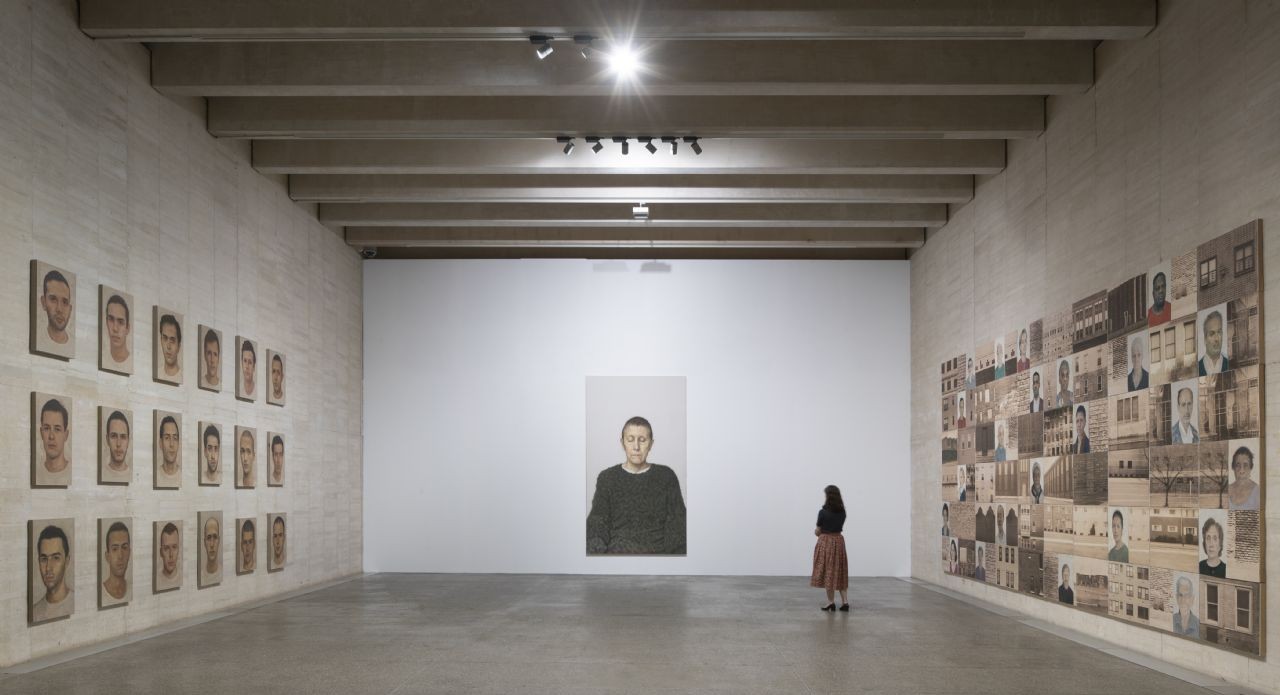Lyon,
Avenida de los Reyes Leoneses 24 | León | Spain
4 June 2022 - 22 January 2023
The exhibition, Y.Z. Kami: In a Silent Way, presents a survey of the Iranian-American painter Y.Z. Kami (Tehran, Iran, 1956), including more than thirty years of his extraordinary portraits of people; his images of buildings, both sacred and domestic; a sculpture installation; and recent works of dreamlike abstractions. In a time when the world is in a singular crisis of the mortal body, Kami’s works look at bodies in ethereal calm, both meditative and philosophical, evocative of both outer and inner being.
Kami’s portraits are of common people staring resolutely forward, yet their gorgeous solemnity gives them a powerful, and often otherworldly, quality of memorial. In his Untitled (18 Portraits) (1994-1995), for example, the pensive group of faces, all seeming to look directly into our eyes, suggest Fayum tomb portraits done nearly two millennia ago in Roman Egypt. His colors here and throughout his work are muted, pulled back, and the figures are isolated in airy space. As Kami’s style of painting has evolved toward making pictures of a very large size, the images have become slightly blurred, glazed with a light that makes them seem less bound by gravity, despite their scale, while they offer an extraordinary sense of stillness and silence, almost as if they are seeking to leave the body and all sense of time behind.
That sense of tension between earthly care and transcendence is seen as well in Kami’s pictures of architectural structures, sometimes combining painted portraits with photographs of buildings. These brick and stone buildings can seem heavy with time and remembrance. Look, for example, at Dry Land (1999-2004), showing twenty-two small-scale portraits among photographs of buildings in Detroit at the end of the twentieth century, when the city was in a state of devastation from years of turmoil and poverty. The picture joins faces and facades, all offering a sense of surfaces worn out by time. Another work, Konya (2007), shows details of the mausoleum of the great thirteenth-century Persian poet Jalal al-Din Rumi in a climbing aggregation of photographs near the pinnacle of which sits a single painted portrait of the late Rumi scholar and woman of letters, Mahin Tajadod, a good friend and mentor to Kami, memorialized and ascendant, reaching toward the sky.
Along with these architectural works, the painter adds a unique sculptural piece, Rumi, The Book of Shams e Tabrizi (In Memory of Mahin Tajadod) (2005), with its radial arrangement of verses taken from Rumi in which he celebrated his teacher, Shams, who taught him about love and devotion. Its circular form is echoed in Kami’s paintings of black and white domes and his series of works on paper titled Endless Prayers, both of which reflect the sacred architecture of mosque and temple domes that typically signify heaven, while also invoking the ecstatic movement of Sufi whirling dervishes in the spirit of Rumi’s poetry.
In the last few years, a sudden turn in Kami’s art takes his work in an entirely new direction. He calls these Night Paintings. They share that urge to leave the body, yet they now achieve this desire fully, showing us diaphanous, abstract forms floating in night-lit and endless space, as if in dreams outside of time. No figures are present at all. Two other works at the end of the exhibition propose a return to bodies and time, in fact to history, though suggesting something also of ecstatic states and leave-taking. The Great Swan (2018) retains the dream-palette of the Night Paintings, their now-familiar blur evoking the unstable condition of the material world. The central figures are only half-seen, once again as if in a dream. But the memorial image is of the Indian Hindu mystic Sri Ramakrishna in 1879, an invocation of transcendent possibilities—to be out of oneself, rising. This penultimate image resolves in the final and most recent work in Y.Z. Kami: In a Silent Way. The picture, simply titled Messenger (2021), is diminutive in size, and for the first time in Kami’s more than thirty years of painting, we only see the person from behind, looking away from us. This mysterious figure, wraithlike, walking stick in hand, is traveling into an unknown landscape.
